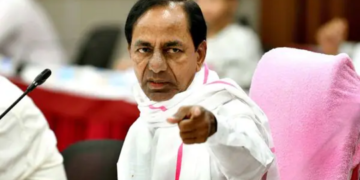A unique and peculiar celestial phenomenon called a hybrid solar eclipse is scheduled to occur in the last week of April.
Hyderabad: The first significant astronomical event of the year will soon occur! Since it is a solar eclipse with a twist, this one is somehow rather distinct.
A hybrid solar eclipse, a rare and unusual celestial occurrence, is scheduled to occur in the final week of April.
The hybrid solar eclipse is anticipated to occur on April 20 and be visible throughout South East Asian nations, including portions of India, stretching up to Australia, per the yearly eclipse statistics from the National Aeronautics and Space Administration (NASA).
A total solar eclipse occurs when the Sun, Moon, and Earth are all in the same line of sight, but a rare hybrid solar eclipse occurs when the Moon is lined up between the Sun and Earth and appears in certain locations as an annular eclipse. Due to the Moon’s shadow moving over the Earth’s surface, the eclipse will be observed as a complete eclipse in some other locations.
In a nutshell, a hybrid solar eclipse will see an annular eclipse in some parts of the world and a complete eclipse in others. The hybrid solar eclipse occurs just once every ten years. A comparable eclipse last happened in 2013, and the following one after April will take place in November 2031.
According to NASA’s eclipse data, the hybrid solar eclipse will follow a path that begins in the southern Indian Ocean and finishes in Australia. The hybrid solar eclipse may be seen across the nation, according to amateur astronomers in Hyderabad, depending on the local meteorological circumstances.
There will be four eclipses this year, according to the US monthly amateur astronomy publication Sky and Telescope. A lunar eclipse in May, an annular and partial solar eclipse in October, and the hybrid eclipse of April 20 are the other three.







